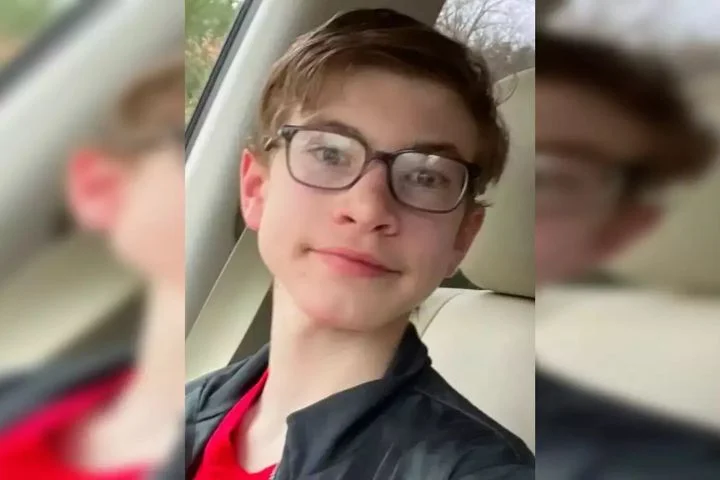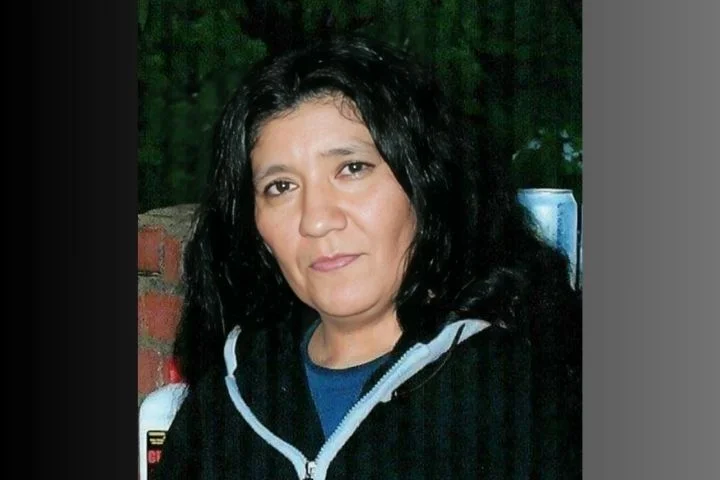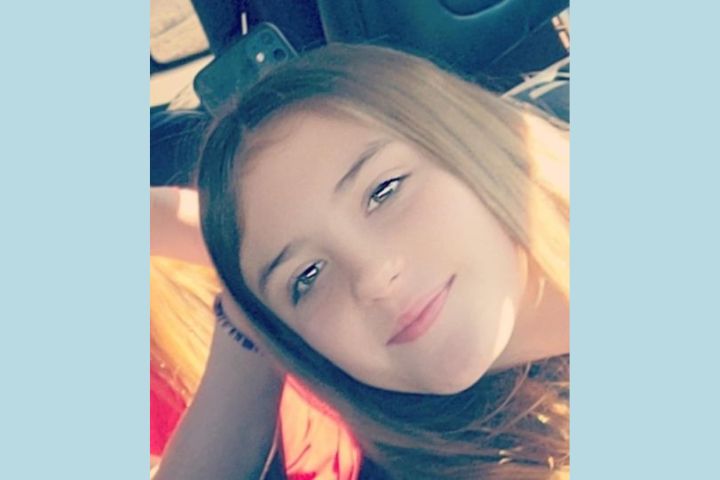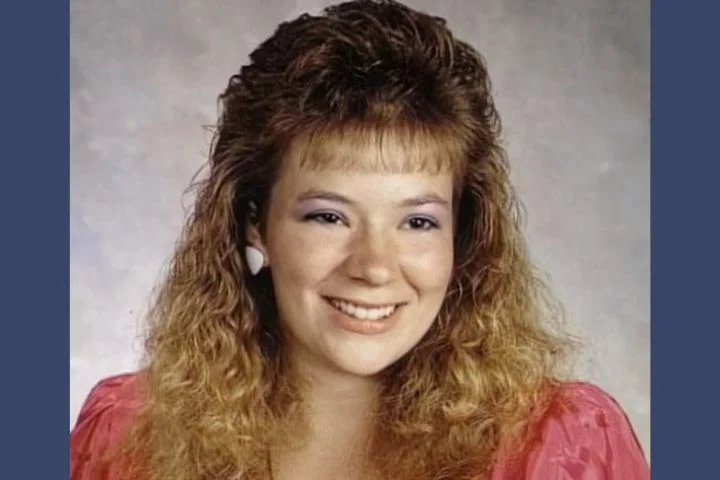When Tiffany Sessions left her apartment on the afternoon of Thursday, February 9, 1989, she planned to be gone for less than an hour. The 20-year-old had been on a bit of a health kick since returning to the University of Florida after winter break and had been taking a daily power walk in an effort to lose a few pounds before an upcoming ski trip with her father. Her roommate, Kathleen Hsu, would sometimes accompany Tiffany on her walks, but on this particular day, she was preparing for an evening class and opted to stay at the Gainesville apartment the two girls shared.
When Tiffany left, she was carrying only her Sony Walkman. Since she planned to be back before Kathleen had to leave for class, she didn’t bring her keys to the apartment with her, expecting her roommate to open the door for her. She had plans to study with a friend later that night and promised she would be back before Kathleen had to leave for class at 7:00 pm.
Tiffany was notoriously reliable; if she said she was going to be somewhere at a certain time, you could count on her being there. When she wasn’t back by 7:15 pm, her roommate immediately started to worry. Concerned that she might have gotten hurt on her walk, Kathleen slowly drove along the route Tiffany normally took, searching for any sign of her. She was nowhere to be found.
Kathleen returned to the Casablanca East apartment complex alone. She hoped that Tiffany would be outside waiting for her, but it was clear she hadn’t made it back to the property. Although her roommate had only been unaccounted for a little over an hour, Kathleen was concerned enough that she called Tiffany’s mother, Hilary, and explained that Tiffany hadn’t returned from her power walk. She then called the Alachua County Sheriff’s Office and reported Tiffany missing.
Hilary immediately traveled to Gainesville; Patrick Sessions, her ex-husband and Tiffany’s father, also made the trip from his home in Miami. When they arrived at Tiffany’s apartment, they expected the search for her to be in full swing; they had no idea that police — especially those in university towns — rarely went out looking for missing adults. Although the Alachua County Sheriff’s Office had taken a missing person report on Tiffany, after failing to find any evidence of foul play along the route she would normally walk, they told her parents that there was little they could do.Tiffany (Photo credit: news.wjct.org)
Hilary was adamant that Tiffany was not the kind of young woman who would go anywhere without letting someone know. A junior studying finance at the University of Florida, Tiffany was an excellent student known for being extremely responsible. She had pledged a couple of sororities her freshman year, but had decided against joining any of them, afraid that the social obligations would interfere with her studies. She wasn’t dating anyone at the time, and it would be completely out of character for her to suddenly take off on her own.
When Tiffany left her apartment that evening, she was wearing a pair of bright red sweatpants, a white and gray sweatshirt, and a pair of white sneakers. She was carrying only her Walkman; her wallet, keys, identification, and car were left behind, along with all of her other personal belongings. She had taken off most of her jewelry before leaving for her run; the exception was a silver and gold Rolex watch her father had given her. It was one of her prized possessions, and she had joked with Kathleen that if anyone ever tried to steal it from her, they would have to fight her to get it. Now, her roommate couldn’t help but fear that Tiffany had tried to fight someone and been hurt in the process.
With law enforcement seemingly reluctant to launch a search for the missing college student, Hilary and Patrick realized they were on their own. Patrick, a media executive for one of the biggest real estate development companies in the state of Florida, immediately began calling on all of his contacts to help find his daughter. The attention made it impossible for police to ignore the case.
Dozens of Patrick’s employees and friends soon arrived in Gainesville to assist in the search. On Friday, Patrick hired a private investigator and chartered a helicopter so he could survey the search area from the air. The helicopter made several passes over a 300-acre parcel of land near the Casablanca East Apartments but failed to find anything relevant.
On Saturday, the Alachua County Sheriff’s Office sent deputies to search the wooded area surrounding Tiffany’s normal walking route with three German shepherds and a bloodhound. By mid-afternoon, they suspended their search, saying that they had found no trace of Tiffany in the woods and nothing to indicate she met with foul play.
A spokesperson for the sheriff’s office admitted that her disappearance was out of character and therefore suspicious, but noted that no one had witnessed Tiffany being abducted and they couldn’t rule out the theory that she had voluntarily left.
Tiffany’s relatives and friends all stated that nothing was going on in her personal life that would make her want to run away. Tiffany had always been very close with her mother; Hilary referred to Tiffany as her best friend. Hilary and Patrick had separated when Tiffany was just two months old; when Patrick left Hilary, he left Tiffany as well and offered her no support when she was growing up. They didn’t develop any kind of relationship until Tiffany was 18 years old; his fervent search for her after she went missing could have been fueled by guilt as much as love.
As the search for Tiffany grew, tips began pouring in to investigators. A few people who lived along the isolated route Tiffany would walk recalled seeing a woman walking on Thursday; at least one person stated that Tiffany had been talking to a man behind the wheel of a car. Another person didn’t see Tiffany interact with the driver but thought that the car might have been following her as she walked.
The fact that there might have been a car following Tiffany led to speculation that she had been kidnapped. Patrick was asked to return to his Coconut Grove home in case someone called with a ransom demand; he did so, but by Sunday night there had been no calls, and the theory she was kidnapped for financial gain began to look unlikely.
Hilary, Patrick, and an army of volunteers did everything they could to get the word out that Tiffany was missing. Missing person posters were printed and distributed throughout Gainesville; by the end of the weekend, there was one in every convenience store, hotel, and restaurant in the city.
Investigators were deluged with calls from people who had seen Tiffany’s missing poster and believed they had information relevant to the case. Most of the calls came from people who thought they had seen the missing woman; detectives followed up on each potential sighting but were unable to confirm any of them.
By Monday, the FBI was involved in the investigation. They believed that Tiffany had most likely been abducted, and since Interstate 75 was just minutes away from where she was last seen her captor could easily have spirited her out of state. Agents from the Jacksonville and Miami FBI offices started interviewing all of Tiffany’s relatives, friends, and classmates in an effort to determine if there was anything in her background that might have made her a target for abduction. They were initially interested in an ex-boyfriend who had recently been arrested in Florida on an outstanding warrant from Indiana, but eventually determined that he was not involved in her disappearance.
The University of Florida community came out in force to help search for Tiffany. Students, professors, and even the college dean assisted in combing through a wooded area near the Casablanca East apartments. The University also arranged for a photo of Tiffany to be shown at the beginning of all videotaped lectures shown to the school’s business students.
On Tuesday, Miami Dolphins quarterback Dan Marino — a family friend who had met Tiffany on several occasions — cut short a Disney World vacation to attend a news conference about the case and make a plea for Tiffany’s safe return. The added star power helped propel the case into the national news.
The case also caught the attention of John Walsh, the host of America’s Most Wanted, and he featured it on his show. The wide-scale publicity caused the number of tips called in to skyrocket; police received more than 400 in the hours after AMW aired. Nearly 100 reporters from across the country also called to express their interest in covering the case.
Although the national exposure led to hundreds of tips, none of them led investigators any closer to finding Tiffany. On February 18, another large-scale physical search was launched. More than 1,000 volunteers helped comb through wooded areas and fields in Gainesville, eventually covering more than 10 square miles of land. They found several old refrigerators, bags of old clothing, and a cow skeleton, but nothing related to Tiffany’s disappearance.
Volunteers went door-to-door throughout Gainesville, handing out missing person flyers in an attempt to solicit new tips for detectives. Concerned that Tiffany was no longer in Florida, more than 400,000 missing posters were printed up and sent out across the country.
Hilary and her husband owned a seafood company in St. Petersburg, Florida; in addition to customers in the United States, they also had many overseas in places such as Japan, Oman, and Thailand. They included Tiffany’s missing poster in every box they sent out, encouraging the recipient to hang it up somewhere prominent.
Long-haul truck drivers took handfuls of posters and hung them up at each truck stop they visited as they made their way across the country. A family friend who had a son in the army gave him posters to hang up at military bases both in the United States and abroad.
To help field the hundreds of tips generated by the international search effort, a toll-free number was established. Thousands of calls came in but no solid leads were developed. Hilary told a reporter that she had reached the point where she would welcome a ransom request as it would give her something to focus on. She was convinced that her daughter was still alive and being held captive somewhere, and she would have done anything possible to get her back.
Two weeks after Tiffany was last seen, Patrick announced that he was offering a $75,000 reward for information leading to her safe return; he would later raise the reward amount to $250,000. He was hopeful the offer of money would be enough to lure the abductor forward, but the reward went unclaimed.
Weeks went by with no real progress. By the time the investigation hit its two-month mark, the case was no longer being covered by the news media on a daily basis. A spokesperson for the Alachua County Sheriff’s Office admitted that investigators didn’t know anything more than they had on the night the 20-year-old vanished. They had been unable to find a single tangible clue pointing to what might have happened to her.
Detectives had interviewed thousands of people, followed up on more than 2,000 tips, and checked out hundreds of potential sightings of Tiffany, but they were unable to develop substantial leads. In May, five billboards with Tiffany’s picture and information about her case were placed in several Florida cities in an effort to reinvigorate the investigation and bring in new leads. Tips continued to trickle in but none of them brought any new information.
Private investigators combed through Tiffany’s address book and interviewed each person who was listed in it; they also went through her photo albums and spoke with each person who appeared in her photos. It was a task made easier by the fact that Tiffany had carefully labeled each photograph with the names of everyone in it and the date it was taken. No one who was interviewed was able to provide them with any information to help solve the case.
In late June, Patrick received a call from two men who claimed that they were responsible for abducting Tiffany and were keeping her locked up somewhere on Cedar Key, roughly 60 miles away from Gainesville. They demanded $200,000 for her return, telling Patrick that if he failed to pay, Tiffany would be taken by boat to Panama or Trinidad and he would never see her again.
In a 48-hour period, the self-proclaimed kidnappers called Patrick nearly a dozen times, growingly more hostile with each call. Sensing that something wasn’t right, Patrick called the FBI. They set up a sting operation and caught both men at a payphone at a Dania, Florida gas station; they were on the phone harassing Patrick at the time. Both were arrested on federal extortion charges after admitting that they had no involvement in Tiffany’s disappearance; they just wanted to make some quick cash off of Patrick.
There was little movement in the investigation over the next year and a half. By the end of 1990, an FBI spokesperson acknowledged that the case had gone cold. Still, the Alachua County Sheriff’s Office refused to close the case. It would remain open indefinitely.
Tiffany was declared legally dead in September 1994. Hilary had gone before a judge in Tampa and made the request; she did so not because she thought Tiffany was dead — she remained convinced her daughter was still out there somewhere — but because she wanted to use Tiffany’s $50,000 life insurance to continue the search for her.
Over the years, detectives developed several persons of interest in Tiffany’s abduction. Convicted ki*ller Wayne Earl Delise was named a possible suspect in 1995, but eventually ruled out. Michael Knickerbocker, a convicted rapist serving life in a Florida p*rison, sent a letter to deputies claiming responsibility for the crime in the late 1990s. His mental status was questionable and he later recanted; detectives were able to rule him out after determining he hadn’t been anywhere near Gainesville at the time Tiffany went missing.
On the 20th anniversary of the case, the Alachua County Sheriff’s Office announced that they were taking a fresh look at the case. Sheriff Sadie Darnell, who became the county’s first female sheriff when she was elected in 2006, wanted desperately for the case to finally be solved and made it a top priority.
Detective Kevin Allen, a member of the county’s cold case unit, was assigned Tiffany’s case in 2013. He combed through the seven boxes of documents and six binders included in the case file and immediately recognized that the case would be a challenge. Despite more than two decades of investigation, Tiffany’s body had never been found, no witnesses ever came forward to admit they had seen her being abducted, and there were no suspects in her presumed m*urder. Sheriff Darnell, however, had a theory she was certain would finally break the case wide open. She told Detective Allen to focus on a man named Paul Rowles.
There was no mention of Rowles in the voluminous case file. He had come onto the radar of Alachua County law enforcement the previous year when his DNA was linked to the 1992 mur*der of Beth Foster. The case had many similarities to Tiffany’s case, and Sheriff Darnell believed the two were likely linked.
Like Tiffany, Beth had been a 20-year-old college student when she was abducted in 1992. She was last seen near where Tiffany had gone walking, and her car was found abandoned near the Casablanca East apartments. Ten days after Beth went missing, her body was found buried in a shallow grave; its wooded location was less than a mile from where Tiffany had last been seen.
Ironically, at the time that Beth’s body was found, Hilary Sessions made a trip to Gainesville and asked police if it was possible that Tiffany might have been kil*led by the same person; she worried that her daughter might be lying, still undiscovered, in the woods near where Beth had been buried. Investigators told her that, while they couldn’t rule out the possibility, they hadn’t found anything to indicate the two crimes were linked.
Twenty years later, when Rowles was finally identified as Beth’s ki*ller, law enforcement thought it was possible that he had also ki*lled Tiffany. He certainly had a checkered past with females; in 1972, he had been convicted of mur*dering his neighbor, Linda Fida, in Miami. James Woodard, who had been the Assistant State Attorney at the time, called it one of the most brutal mu*rder cases he had ever seen.
To avoid the death penalty, Rowles pleaded guilty to the crime and was sentenced to life in p*rison. Woodard argued that he should never be eligible for parole, and the judge acknowledged that he believed Rowles should spend the rest of his life in p*rison. The parole board seemed to disagree; incredibly, he was granted parole in December 1985. He moved to Gainesville in 1988; six months later, Tiffany vanished.
At the time of Tiffany’s disappearance, Rowles was working at a construction site near the route where she would take her daily walks. Somehow, he went unnoticed by law enforcement and eventually left the Gainesville area.
By the time he was identified as Beth’s ki*ller, Rowles was serving a life sentence for the mur*der of another woman. Investigators attempted to interview him about Tiffany, but he refused to speak with them. Detectives refused to give up; in January 2013, Sheriff Darnell sent Detective Allen to meet with Rowles, hoping he might finally be ready to talk. Unfortunately, Rowles was in the hospital at the time, dying from lung cancer. Due to pain, he was being kept under sedation and interviewing him was impossible.
Before leaving the hospital, Detective Allen gave the ICU nurses a picture of Tiffany and asked them to show it to Rowles if he ever regained consciousness. He didn’t. He died a few days later, taking what he might know about Tiffany’s disappearance to the grave.
Sheriff Darnell instructed Detective Allen to take possession of all of the belongings Rowles had left behind in his pri*son cell. While going through an old address book from 2002, Detective Allen made a chilling discovery: written in the margin of one of the pages was the notation “#2 2–9–89 #2.” Rowles seemed to be recording the fact that Tiffany had been his second victim on February 9, 1989.
The FBI submitted the address book for further analysis and determined that the handwriting definitely belonged to Rowles. Although it wasn’t proof that Rowles k*illed Tiffany — he had recorded the names of his other victims in the book but never mentioned Tiffany by name — the notation was enough to convince many investigators that Rowles was the man they had been seeking for 25 years.
Hoping to finally close the case, officials decided to conduct a massive physical search of the area where Beth’s body was found in 1992. In 2014, they excavated an area equivalent in size to two football fields, but found nothing. Although investigators feel certain that Tiffany was ki*lled by Paul Rowles, her case remains open and the search for her body continues.
Tiffany Sessions was just 20 years old when she went missing in 1989. The finance major had big plans for her future and hoped to one day be the CEO of a large company. She had the ambition, drive, and brains to achieve her dreams but everything was stolen from her on a chilly winter night when she vanished without a trace. Although police believe that she was ki*lled by Paul Rowles, as of July 2022 her body has not been recovered and her family is still waiting for closure. If you have any information about Tiffany, please contact the Alachua County Sheriff’s Office at 352–367–4161.






